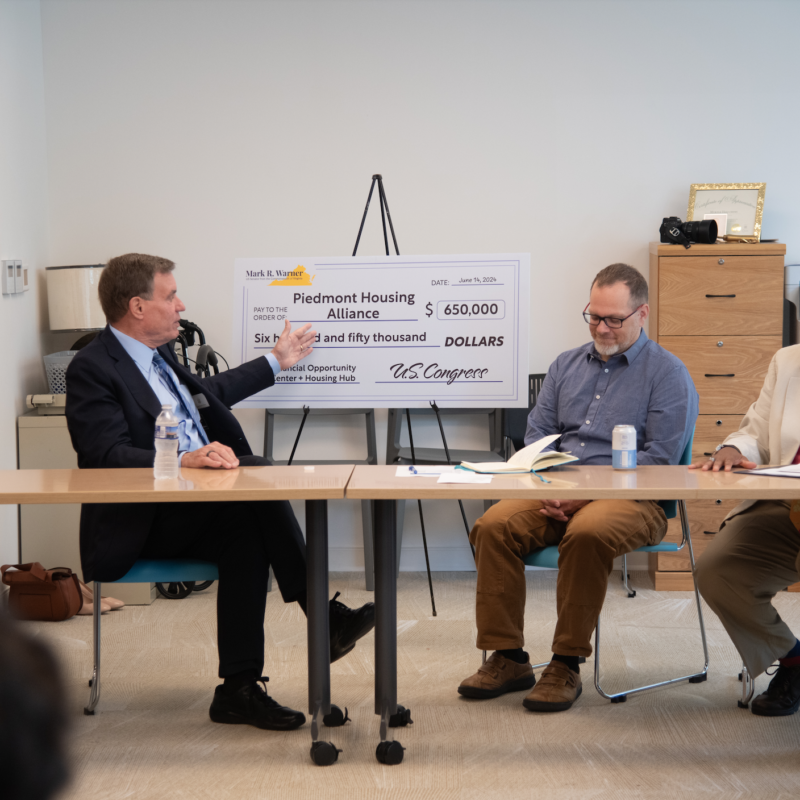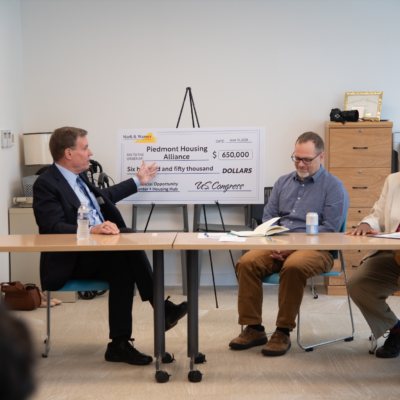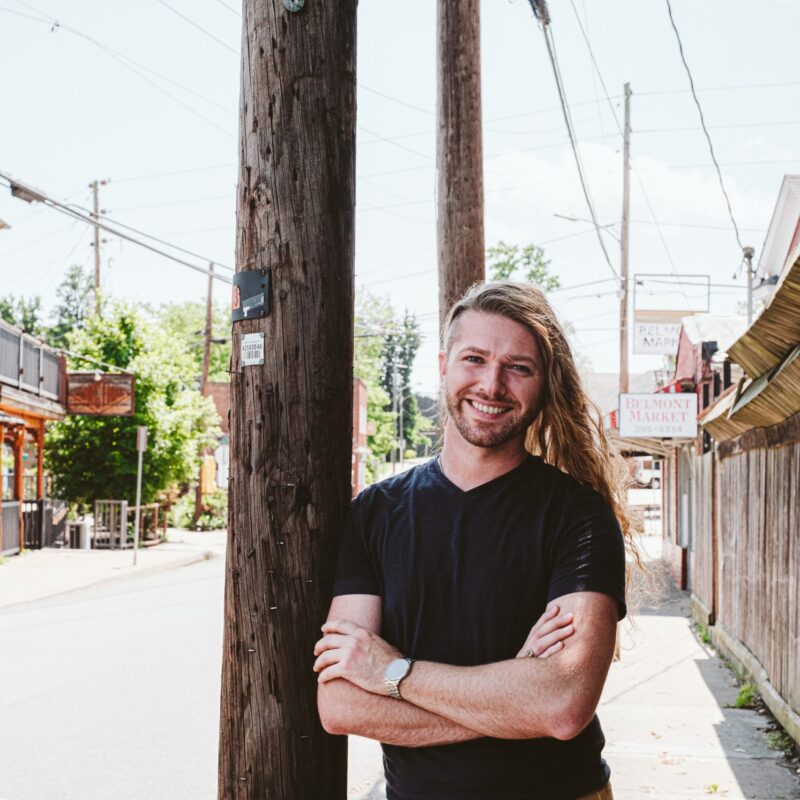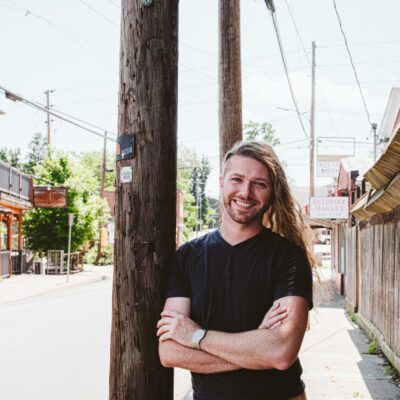It’s been more than a month since the Rivanna Water and Sewer Authority (RWSA) announced on June 25 that it had fired Gannett Fleming, the engineering firm that developed the community’s water supply plan approved in 2006. What does the change mean for the ongoing debate about the plan? Unsurprisingly, it depends whom you ask.
Albemarle County supervisor Sally Thomas, for example, sees little controversy in the shift. “It was quite natural to have a parting of ways,” she says.
|
RWSA director Tom Frederick says that design work on the proposed new dam at Ragged Mountain Reservoir, already performed by fired firm Gannett Fleming, can largely be used by the next firm, still to be hired. |
After Gannett Fleming drastically increased its cost estimate for a new dam at the Ragged Mountain Reservoir—announcing in August 2008 that costs could jump from $37 million to $72 million—the RWSA hired a team of independent consultants to review dam plans. The expert panel’s April 6 report suggested various ways to alter the dam design and reduce the cost, though it stopped short of offering a dollar estimate. In Thomas’ understanding, Gannett Fleming simply opted not to incorporate the expert panel’s suggestions—hence, the split.
Don Wagner, chair of the Albemarle County Service Authority (ACSA) board, has a similar take, shying away from the word “firing” to describe what happened. Wagner also sees the step as a good PR move by RWSA. “The water has been so poisoned by things said and published about Gannett Fleming, it’s time to move on to someone else.”
Dede Smith, a member of the group that’s most vocally critized the permitted plan—Citizens for a Sustainable Water Supply (CSWP)—says that, based on correspondence between Gannett Fleming and RWSA before the firing, she believes Gannett Fleming was in fact willing to change its design as outlined by the expert panel. But, in her interpretation, the firm seemed reluctant to accept responsibility for potential problems resulting from those changes. “Gannett Fleming may understandably be very cautious,” she says.
Whatever the reason for the split, it certainly adds another link to a long chain of delays for the plan. RWSA expects to hire a new firm later this summer. RWSA director Tom Frederick says much of Gannett Fleming’s work remains valid and can be used going forward, though some backtracking will be necessary. “However, we see the revisiting of judgment and interpretation as a positive thing, because a ‘fresh look’ is expected to generate design decisions that result in substantial savings on overall project costs,” he says in an e-mail.
What have we spent?
In an attempt to quantify what the community has spent thus far to develop the water supply plan, C-VILLE asked RWSA and other government bodies what their costs had been. What is likely the largest number—the amount RWSA has already paid or will pay Gannett Fleming—was unavailable by press time. The expert panel cost RWSA $55,000, and a South Fork Rivanna Reservoir dredging study by the South Fork Task Force resulted in legal and administrative costs to RWSA of $9,632.
Other consulting firms who were part of the process, such as Gahagan & Bryant and Dominion Development Resources, did not bill RWSA for their work. A further dredging study and two pipeline studies, which were called for by Charlottesville’s City Council in November 2008 (largely in response to public scrutiny of the plan) and are now ongoing, will also carry costs, but those amounts are not yet known.
In terms of staff time spent, Frederick is careful to acknowledge that supply plan development under any circumstance is very labor-intensive, “because of the detailed and technical nature of the legal requirements for permitting under the federal Clean Water Act.” However, he adds, “It is also fair to say that the public involvement process requested by citizens in this community is far more extensive than what regulatory agencies deem acceptable and also far beyond what most communities provide.”
In addition to RWSA staff, the city and the ACSA have contributed labor hours to the planning process, too—for example, staff recently completed a water conservation study (also mandated by City Council in November 2008).
Liz Palmer, another ACSA board member, characterizes many of the costs for studies—particularly the dredging study—as “backtracking.” Back in the 1990s, she was a citizen activist who fought for a dredging study, as CSWP has done again more recently. “The 2004 Gannett Fleming report satisfied us beautifully,” Palmer says. “Dredging doesn’t give us the water we need. It was very clear that increasing the dam height was vastly less expensive….Now we’re reopening that entire thing. We’ve already paid for this.”
Wagner worries that costs could continue to multiply indefinitely. “We would be spending money on studying things forever,” he says. “It could be another Meadowcreek Parkway. That appears to be [CSWP’s] strategy.”
For her part, Smith says this: “Whatever costs have been associated with public scrutiny of this plan are a drop in the bucket compared to the disastrous costs of this plan on the ratepayer. Even compared to what they’ve spent on Gannett Fleming—that’s millions.” (Smith did not, however, have an exact figure for RWSA’s payments to Gannett Fleming.)
With a public project of this magnitude, says Sally Thomas, extensive conversation is par for the course. “If [RWSA] were a company or a business it could just say ‘This is the way we’re going to do business.’ But it is a public body and it has to be responsive to the public. That’s the cost of doing business.”
UPDATE, July 27, 3:10pm: After the print deadline for this issue of C-VILLE, we received the following information from RWSA director Tom Frederick. The amounts billed to RWSA by Gannett Fleming are $2,170,150 for development of the plan and $1,713,415 for dam design, a total of $3,883,565. Also, updated costs related to the expert panel are $74,265. Watch next week’s C-VILLE for a more complete update.
C-VILLE welcomes news tips from readers. Send them to news@c-ville.com.






